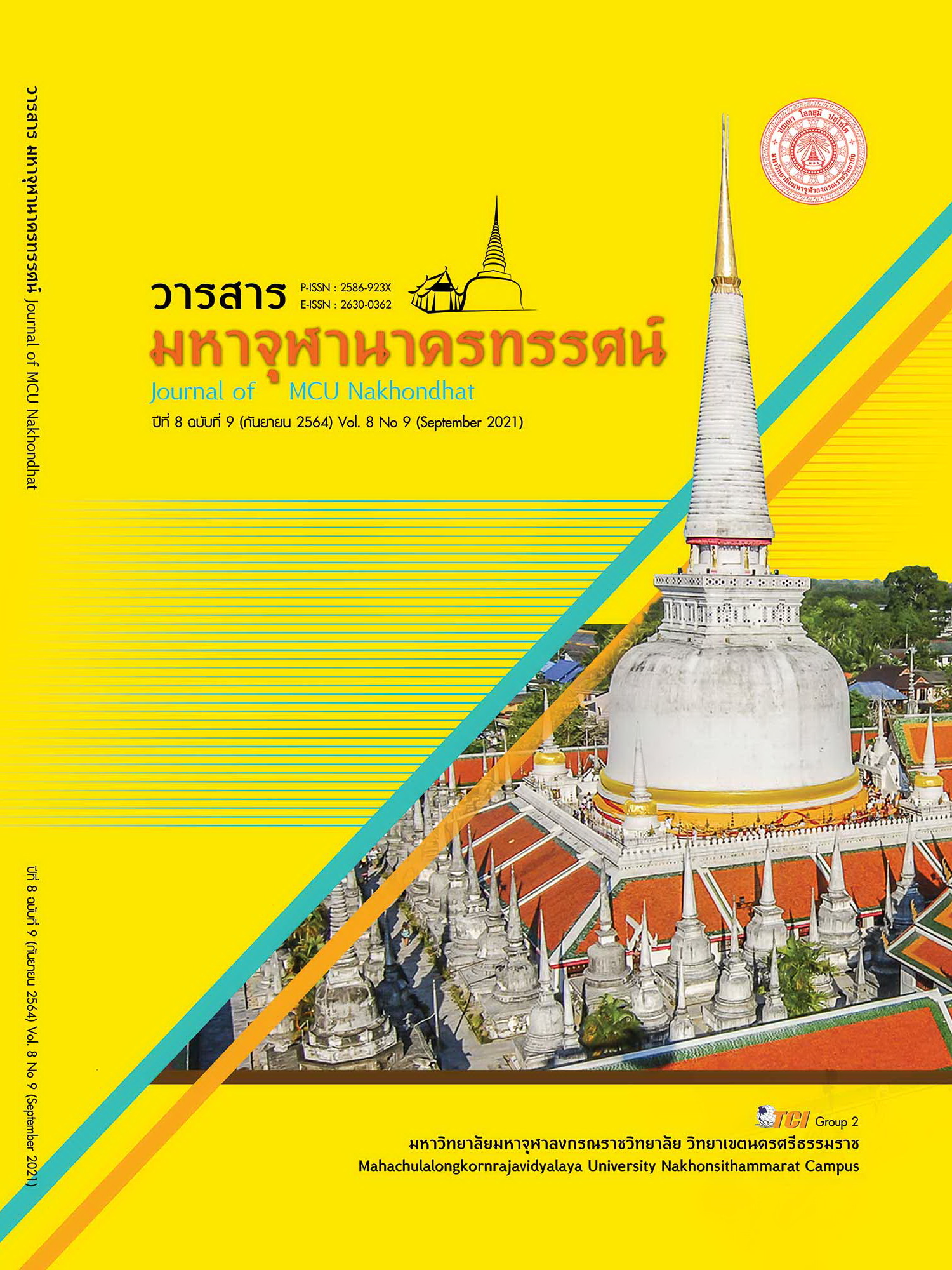MATHEMATICS COURSES FOR ADJUSTING STUDENTS' BASICS BEFORE STUDYING ECONOMICS
Main Article Content
Abstract
The objectives of this research article were to 1) to study mathematical patterns and techniques, 2) to create a mathematical manual, and 3) to compare the cognition of before and after class of students. The samples were 12 students in Economics. The research tools used in the study included pre-test and post-test. The statistics were used as Percentage and T-test. The results of the mathematical study patterns and techniques showed that integrating of three teaching techniques on learning the intensive preparation in Mathematics can enable students to analyze the problem in Mathematics step by step with KWDL technique, to show how to solve mathematical problems, to show how to do the mathematical problem in details, to identify the landmarks for application (Demonstration teaching method) and to summarize after doing mathematical problems in order to apply in Economics (Conceptualizing teaching method). According to these techniques, the researcher created the Mathematical Learning Guide, which consisted of 1) Principles and reasons, 2) Objectives, 3) Concepts and theories used to create mathematical manual, 4) Learning management process (with 5 steps according to the REUCA Model concept), and 5) Measurement and evaluation. According to learning management process, it will be integrated taught by KWDL technique, demonstration teaching method technique, conceptualizing teaching method, and teaching method followed with REUCA Model These included the review stage, the example step, the understanding step, the knowledge creation stage, and the implementation stage. The results of implementation manual on learning the intensive preparation in Mathematics showed students had a higher post-test score of 45.37 percent with statistically significantly at 0.01%.
Article Details
References
กิตติมา ปัทมาวิไล และสุเทพ อ่วมเจริญ. (2559). การพัฒนารูปแบบการเรียนการสอนที่เสริมสร้างทักษะการให้เหตุผล การแก้ไขปัญหาและการสื่อสารทางคณิตศาสตร์ระดับชั้นมัธยมศึกษาปีที่ 5. Veridian E-Journal, 9(3), 377-391.
เกริกฤทธิ์ นิลอุบล และคณะ. (2563). การพัฒนาคู่มือครูการจัดการเรียนรู้แบบโครงงาน โรงเรียนขยายโอกาสทางการศึกษา สังกัดสำนักงานเขตพื้นที่การศึกษาประถมศึกษา สุราษฎร์ธานีเขต 1. วารสารมหาจุฬานาครทรรศน์, 7(10), 182-196.
คณะมนุษยศาสตร์และสังคมศาสตร์. (2560). โครงสร้างหลักสูตร. ใน หลักสูตรเศรษฐศาสตรบัณฑิต (หลักสูตรปรับปรุง พ.ศ. 2560). มหาวิทยาลัยเทคโนโลยีราชมงคลตะวันออก.
ทิศนา แขมมณี. (2548). รูปแบบการเรียนการสอน: ทางเลือกที่หลากหลาย. กรุงเทพมหานคร: สำนักพิมพ์จุฬาลงกรณ์มหาวิทยาลัย.
ทิศนา แขมมณี. (2551). ศาสตร์การสอน: องค์ความรู้เพื่อการจัดกระบวนการเรียนรู้ที่มีประสิทธิภาพ. กรุงเทพมหานคร: สำนักพิมพ์จุฬาลงกรณ์มหาวิทยาลัย.
นรรัชต์ ฝันเชียร. (2561). Child center เหมาะกับการเรียนการสอนแบบใด. เรียกใช้เมื่อ 3 พฤษภาคม 2564 จาก https://www.trueplookpanya.com/blog/content/ 68591/-teaartedu-teaart-teaarttea-
ไพรัชช์ เติมใจ. (2552). การศึกษาผลการปรับระดับความรู้พื้นฐานทางคณิตศาสตร์โดยการฝึกวิเคราะห์คำตอบ อภิปรายและสรุปผลร่วมกัน ของนักศึกษาปี 1 สาขาวิชาคณิตศาสตร์. ใน รายงานการวิจัย. มหาวิทยาลัยราชภัฏเชียงราย.
มัญฑนา ลาภยิ่งยง. (2562). การพัฒนารูปแบบการเรียนการสอนคณิตศาสตร์เพื่อเสริมสร้างมโนทัศน์และความคงทนของมโนทัศน์ทางคณิตศาสตร์ของนักเรียนชั้นมัธยมศึกษาปีที่ 1. วารสารชุมชนวิจัย, 13(3), 44-56.
รำเพย สุทธินนท์. (2556). เทคนิคและวิธีการสอนคณิตศาสตร์. เรียกใช้เมื่อ 3 พฤษภาคม 2564 จาก https://sornorramphoei.wordpress.com/2013/05/08
วิจารณ์ พานิช. (2555). วิถีสร้างการเรียนรู้เพื่อศิษย์ในศตวรรษที่ 21. กรุงเทพมหานคร: บริษัท ตถาตา พับลิเคชั่น จำกัด.
สมเกียรติ อินทสิงห์. (2559). การพัฒนาความสามารถในการแก้ปัญหาและผลสัมฤทธิ์ทางการเรียนวิชาคณิตศาสตร์โดยใช้กลวิธี STAR ร่วมกับกราฟิกออแกไนซ์เซอร์ สำหรับผู้เรียนชั้นมัธยมศึกษาปีที่ 4. Veridian E-Journal, 9(1), 356-368.
Shaw, Jean M. et al. (1997). Cooperative Problem Solving: Using K-W-D-L as an Organization Technique Retrieved. Retrieved February 23, 2019, from http://vnweb.hwwilsonweb.com/hww/results/results_single_ftPES


